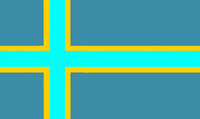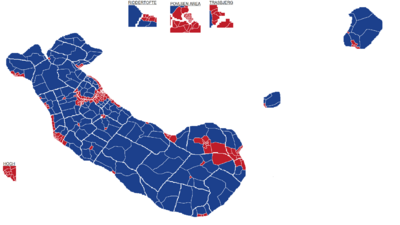Indian Empire: Difference between revisions
IndianEmpire (talk | contribs) (added chart, will be coming through to add the images, please stand by) |
IndianEmpire (talk | contribs) No edit summary |
||
| Line 113: | Line 113: | ||
|- | |- | ||
| Prime Minister/Speaker | | Prime Minister/Speaker | ||
| Juan Rodriguez | | [[Juan Rodriguez]] | ||
| | | [[File:Juan_rodriguez_IE_PM.png|100px]] | ||
| 2015 | | 2015 | ||
|- | |- | ||
| Minister of Foreign Affairs | | Minister of Foreign Affairs | ||
| Bharjak Tregster | | [[Bharjak Tregster]] | ||
| | | | ||
| 2009 | | 2009 | ||
|- | |- | ||
| Head of the Treasury | | Head of the Treasury | ||
| Bjarne Ottesen | | [[Bjarne Ottesen]] | ||
| | | | ||
| 2009 | | 2009 | ||
|- | |- | ||
| Minister of Homeland Security | | Minister of Homeland Security | ||
| Jiang Yuhan | | [[Jiang Yuhan]] | ||
| | | | ||
| 2009<br />(1991-2001) | | 2009<br />(1991-2001) | ||
|- | |- | ||
| Minister of Health | | Minister of Health | ||
| Ella Mouritsen | | [[Ella Mouritsen]] | ||
| | | | ||
| 2009 | | 2009 | ||
|- | |- | ||
| Minister of Agriculture | | Minister of Agriculture | ||
| Joaquin Aguinado | | [[Joaquin Aguinado]] | ||
| | | | ||
| 2020 | | 2020 | ||
|- | |- | ||
| Attorney General | | Attorney General | ||
| Luciana Tajdor | | [[Luciana Tajdor]] | ||
| | | | ||
| 2015 | | 2015 | ||
|- | |- | ||
| Minister of Industry | | Minister of Industry | ||
| Nicholas Nissen | | [[Nicholas Nissen]] | ||
| | | | ||
| 2009<br />(1991-2001) | | 2009<br />(1991-2001) | ||
|- | |- | ||
| Minister of the Interior | | Minister of the Interior | ||
| Koizumi Taji | | [[Koizumi Taji]] | ||
| | | | ||
| 2009 | | 2009 | ||
|- | |- | ||
| Minister of Labor | | Minister of Labor | ||
| Heidi Brink | | [[Heidi Brink]] | ||
| | | | ||
| 2013 | | 2013 | ||
|- | |- | ||
| Minister of Development | | Minister of Development | ||
| Zhang Xinya | | [[Zhang Xinya]] | ||
| | | | ||
| 2015 | | 2015 | ||
|- | |- | ||
| Minister of Transportation | | Minister of Transportation | ||
| | | [[Asbjørn Elkjær]] | ||
| | | | ||
| 2020 | | 2020 | ||
|- | |- | ||
| Minister of Education | | Minister of Education | ||
| Esmeralda Salices | | [[Esmeralda Salices]] | ||
| | | | ||
| 2020 | | 2020 | ||
|- | |- | ||
| Minister of Energy | | Minister of Energy | ||
| Cecille Bisgaard | | [[Cecille Bisgaard]] | ||
| | | | ||
| 2017 | | 2017 | ||
|- | |- | ||
| Minister of Science | | Minister of Science | ||
| Ulla Bech | | [[Ulla Bech]] | ||
| | | | ||
| 2009 | | 2009 | ||
|- | |- | ||
| Minister of Taxation | | Minister of Taxation | ||
| Alma Gallo | | [[Alma Gallo]] | ||
| | | | ||
| 2009 | | 2009 | ||
|- | |- | ||
| Minister of Sports | | Minister of Sports | ||
| Taguchi Tanosuke | | [[Taguchi Tanosuke]] | ||
| | | | ||
| 2020 | | 2020 | ||
|- | |- | ||
| Minister of the Environment | | Minister of the Environment | ||
| Axloven Lahjayten | | [[Axloven Lahjayten]] | ||
| | | | ||
| 2009<br />(1991-2001) | | 2009<br />(1991-2001) | ||
|- | |- | ||
| Chief of Staff | | Chief of Staff | ||
| Thorvald Kirkegaard | | [[Thorvald Kirkegaard]] | ||
| | | | ||
| 2015 | | 2015 | ||
|- | |- | ||
| Trade Representative | | Trade Representative | ||
| | | [[Bjørn Duus]] | ||
| | | | ||
| 2009<br />(1991-2001) | | 2009<br />(1991-2001) | ||
|- | |- | ||
| Head of Ambassadors | | Head of Ambassadors | ||
| Rafael Atenas | | [[Rafael Atenas]] | ||
| | | | ||
| 2015 | | 2015 | ||
|- | |- | ||
| Director of Intelligence | | Director of Intelligence | ||
| Frida Svendsen | | [[Frida Svendsen]] | ||
| | | | ||
| 2009 | | 2009 | ||
|} | |} | ||
Revision as of 19:07, 24 July 2020
The Parliamentary Republic of Indian Empire Indian Empire | |
|---|---|
|
Flag | |
| Motto: Kærlighed, Forandring og Mod | |
| Anthem: Vi Lever Alle I Harmoni | |
 | |
| Capital and largest city | Povlsen |
| Official languages | English, Spanish, Danish |
| Ethnic groups (2020) | Hispanic, Empirian, Danish |
| Demonym(s) | Empirian |
| Government | Parliamentary Republic |
• Prime Minister | Juan Rodriguez |
| Legislature | House of Commons |
| Establishment | |
• Spanish Colony | 1520 |
• Danish Colony | 1660 |
• Independence | March 29, 1965 |
| Area | |
• Total | 273,982 km2 (105,785 sq mi) |
• Water (%) | 1.22% |
| Population | |
• Estimate | 58,652,471 |
| GDP (PPP) | 2020 estimate |
• Total | 2,724,482,399,989.00 |
• Per capita | 46,451.28 |
| GDP (nominal) | 2020 estimate |
• Total | 2,724,482,399,989.00 |
• Per capita | 46,451.28 |
| Gini (2020) | 10 low |
| HDI (2020) | 0.932 very high |
| Currency | Kroner (IEK$) |
| Time zone | UTC-8 |
| Driving side | right |
| Calling code | 344+ |
| Internet TLD | .ii |
The Parliamentary Republic of Indian Empire, better known as simply Indian Empire, is a group of three islands located in the tropical Northern Pacific Ocean. The nation consists of three islands, most likely of volcanic origin, which formed around 50 years and were settled by the Impiro People. The nation became Independent of Danish Colonial Rule on 29 March 1965. The Population of Indian Empire is 58.6 Million as of the 2020 Empirian Census.
The Empirian Constitution, ratified in a 1962 Referendum, originally called for a Constitutional Monarchy, where the Danish King had some role in the country's democratic processes. However, this was overturned in a 2001 Referendum that coincided with national elections, making the nation currently a Parliamentary Republic. The current Prime Minister is Juan Rodriguez, who has served since 2015. Indian Empire is also a member of the OECD.
Indian Empire is considered to be one of the most developed nations in the world. Empirians have a very high standard of living, with the world's highest rating on the Human Development Index as well as education and healthcare. Indian Empire also has the world's highest levels of economic equality and social mobility.
Etymology
Prior to colonial rule
Prior to colonial rule, the islands were inhabited by the Impiro People.
Colonial Rule
The Impiro name first originates from Spanish colonial rule in the 15th and early 16th century, the islands initially being called "Espana Impiro" The Etymology of Indian Empire's name originates from the indigenous Impiro People , along with the Danish and Spanish History on the islands. Under Denmark, the islands were called "Dansk Indiske Impiro".
Independence
The name of Indian Empire was anglicized from "Indiske Impiro" to "Indian Empire" upon Independence from Denmark in March of 1965.
History
Early Settlements
The islands that first became Indian Empire were initially formed around 50 million years ago. It is suspected, but not confirmed, that the islands were formed as a result of volcanic activity in the Pacific. The islands were first settled by humans around 5,000 years ago by the Impiro People, who emigrated from other Pacific Islands. The Impiros spread across the central plains and eastern desert region of the main island. For close to 2,000 years, the communities remained spread out and isolated, remaining small in nature. However, around 3000 BC, the communities began to meet, establishing the Impiro Kingdom, a unification of all Impiro communities and establishing the council of Impiros, consisting of leaders of the main tribal groups. For the next 4,500 years, the Impiros lived peacefully and in harmony, farming on the land and hunting Bison, Walruses, and other animals.
Spanish Discovery
In 1517, Spanish Explorer Ramon Secada discovered the islands and the Impiro People. The Spanish later arrived on a second voyage, three years later in 1520, and established Secada Station, later known as Povlsen. According to written records, the two groups got along well, and the entire island chain was taken over by the Spanish in 1523 under the name "Espana Impiro". The Impiros helped the Spanish learn about farming & hunting on the island and the Impiros picked up Spanish.
Danish Colonial Period
In 1660, Denmark gained control over the island as a result of the Treaty of London, after the Danish and British worked together to defeat the Spanish. The land was renamed to "Dansk Indiske Impiro" and Secada Station became Povlsen. It was during Danish rule that the slave trade finally reached Indian Empire, with numerous Impiros being forced to work on Danish-owned farms. The remaining Spanish settlers often risked prosecution to keep Impiros safe over this period. The 1848 revolutions across Europe marked substantial reforms to Danish control over Indian Empire. As a result of Denmark's transition to a Constitutional Monarchy, slavery was immediately banned across Indian Empire. A system of self-governance for the islands was also set up, with Indian Empire now being allowed to elect a territorial governor every five years. This territorial governor would be allowed to administer policy and would be the main base for communications with Denmark. In 1940, after the Nazis defeated Denmark, Povlsen served as a temporary home for the Danish government and royal family. This was also the only major war with Indian Empire's involvement, with some units being sent to the European front. After the Nazis defeat, the Danish Government and Royals returned to Copenhagen. In 1945, following the establishment of the United Nations, global pressure began to exist to decolonize the region. The Danish Government entered negotiations with Indian Empire in 1951, with territorial Governor Malthe Hjorth. The two parties had large disputes, namely over military bases- the Danish wanted to maintain a military presence over the island, while the Empirians largely rejected this proposal. In March 1955, Denmark was forced to sign a UN convention mandating that Indian Empire be granted independence by March of 1965, or they would face sanctions. In 1955, the Empirians replaced Hjorth with a new territorial governor, Santiago Fonseca. Fonseca remained tough, and set up basic trade agreements with Denmark. However, Fonseca adamantly refused to allow any military presence on the island. Indian Empire ratified a constitution, which would take affect upon Independence, in 1962.
Independence
On March 29th, 1965, Indian Empire officially gained independence from Denmark. The Nations of the world rapidly began to recognize the Independence. In the nation's first election, Fonseca's Independence Party won over 80% of the vote and every seat in Parliament, making him the first prime minister of Indian Empire. During his two terms as Prime Minister, he passed a national healthcare system, and construction began on the national highway network, which would make travel through the country a lot easier. They also officially joined the Alliance of Unaligned Nations, officially taking a neutral stance on the cold war between the United States and Soviet Union. The nation's population boom, which occurred from the 1950's to 1970's, began to slow down in the 1980's. The Highway network was officially completed in 1991. Several years later, Indian Empire became a member of the Trans Pacific Partnership, a free trade agreement with the United States and numerous East Asian nations. Indian Empire became one of the first major nations to grant full equality to LGBTQ peoples and couples, doing so in 2009.
Land
Geography
Indian Empire is a very diverse nation geographically. The nation consists of three main islands. The largest island, Impiro Island, consists of multiple mountain ranges that jut out of an otherwise rather flat island. The island is also believed to be a plateau, with many parts of the island outside of the coastlines sitting 500-1500 feet above sea level. The Capital City, Povlsen is largely tucked along the coastline in the north central portions of Indian Empire. The other smaller islands, Gadbjerg and Nordoen, posess similar Geographic traits.
Climate
Much of Indian Empire's climate hinges around the varying geographical features of the country. The only locations in Indian Empire that routinely drop below O celsius are on the Northern Island of Nordoen, and snow is incredibly rare outside of these locations. Temperatures and rainfall vary greatly across the islands. In the deserts that dominate the eastern half of Impiro island, 35C is rather routine and even 45C is not entirely unheard of during the warmer months. Other regions, however, dip into single digits celsius in winter. Winter months are from December to March and Summer months are from June to September.
Environment
Indian Empire is regarded as having one of the most intact environments in the world. The natural forestry in the northern regions has been well preserved by the establishment of numerous nature reserves. The environment is very diverse. The Northern Island of Nordoen is largely dominated by tundra, while Gadbjerg and Northwestern Empiro island are largely dominanted by forested land. The Eastern half of the island is largely very arid and deserted, while the rest of Impiro Island is largely either flat and arable farmland.
Wildlife
The national animal, the Impiro Walrus, is unique to Indian Empire and is the only walrus species known outside of the artic. How this species emerged on the island is unknown, but Impiro Walruses largely flock through nature reserves in the northern half of the nation. Bears and Bison have also been prevalent throughout Indian Empire in the past, but are now near extinct on the island due to hunting.
Administrative Divisions
Indian Empire is divided into Thirty Seven Provinces and one Capital District. The Provinces generally have little lawmaking authority, but do serve to more easily describe locations in census data and when mailing, and amongst nationally managed departments serve as divisions that allow for easier administrating. Inside of these Provinces are cities. Cities have some lawmaking power, but are restricted by the limits imposed by already existing national laws. The populations of these provinces vary widely.
Politics
Politics in Indian Empire revolve around a framework established in the Empirian Constitution, which was ratified in 1962. It established a constitutional monarchy, with the Danish Monarch as Head of State. It established a unicameral legislature, known as the House of Commons, a 387 member legislative body of which the selected Speaker would become Prime Minister. This constitution has been amended several times, notably removing the Monarch's role in 2001, and establishing the Cube Root Rule for the number of seats in 2019, and decreasing the voting age in 1991.
Government
The Empirian Government consists of a singular, Unicameral Legislature known as the House of Commons. As of 2020, this legislature contains a total of 389 members, who each represent roughly 150,000 citizens. The House of Commons is responsible for legislating the law, is responsible for the national budget, approving of treaties with foreign nations, and exercising the government's powers. Outisde of the legislature, a cabinet exists, which are voted on in the party's leadership elections along with the standing candidate for Prime Minister. This cabinet consists of a total of 22 offices, all of which must be members of parliament. Indian Empire is a parliamentary democracy with Universal Suffrage. It has one of the lowest voting ages in the world, with citizens being allowed to vote at the age of majority- which has been 16 since 1991. Members of the House of Commons are elected through First Past the Post voting in a total of 389 districts, with the most seats dictating control of the legislature. This party's majority leader, who is the house speaker that introduces bills, is the Prime Minister of Indian Empire. Previously, snap elections were allowed to be requested upon a vote of no confidence, however, this system was eliminated with the elimination of the Danish Monarch's role in Empirian Democracy, and elections have occurred every four years since 2001. In the most recent elections, which occurred in July of 2017, Indian Empire's Social Democratic Party, led by Prime Minister Juan Rodriguez, lost a total of 21 Parliament seats, but retained a majority in the house of commons, 220 to 167. Following the expansion of Parliament in 2020, two special elections that occurred were both won by the Social Democrats, who currently hold a 222-167 majority. The next elections will occur in 2021.
Cabinet
The Cabinet consists of a total of 22 officials, who serve in the House of Commons. They are elected through a party election every five years, where the prime minister and other cabinet officials are selected. The cabinet officials are headed by the prime minister, Juan Rodriguez, who has served since 2015. The second highest minister is the Chief of Staff, Thorvald Kirkegaard, who runs with the Prime Minister and helps manage cabinet duties.
Officials
| Position | Person | Photo | Since |
|---|---|---|---|
| Prime Minister/Speaker | Juan Rodriguez | 
|
2015 |
| Minister of Foreign Affairs | Bharjak Tregster | 2009 | |
| Head of the Treasury | Bjarne Ottesen | 2009 | |
| Minister of Homeland Security | Jiang Yuhan | 2009 (1991-2001) | |
| Minister of Health | Ella Mouritsen | 2009 | |
| Minister of Agriculture | Joaquin Aguinado | 2020 | |
| Attorney General | Luciana Tajdor | 2015 | |
| Minister of Industry | Nicholas Nissen | 2009 (1991-2001) | |
| Minister of the Interior | Koizumi Taji | 2009 | |
| Minister of Labor | Heidi Brink | 2013 | |
| Minister of Development | Zhang Xinya | 2015 | |
| Minister of Transportation | Asbjørn Elkjær | 2020 | |
| Minister of Education | Esmeralda Salices | 2020 | |
| Minister of Energy | Cecille Bisgaard | 2017 | |
| Minister of Science | Ulla Bech | 2009 | |
| Minister of Taxation | Alma Gallo | 2009 | |
| Minister of Sports | Taguchi Tanosuke | 2020 | |
| Minister of the Environment | Axloven Lahjayten | 2009 (1991-2001) | |
| Chief of Staff | Thorvald Kirkegaard | 2015 | |
| Trade Representative | Bjørn Duus | 2009 (1991-2001) | |
| Head of Ambassadors | Rafael Atenas | 2015 | |
| Director of Intelligence | Frida Svendsen | 2009 |




